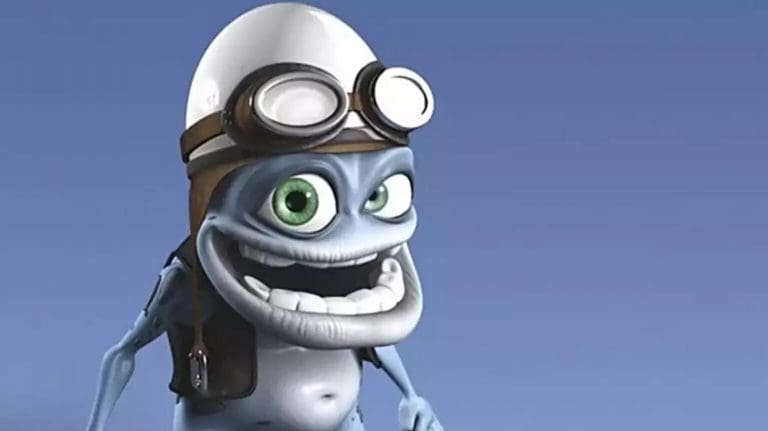Remember Crazy Frog? The blue, anthropomorphic character that took the 2000s by storm with his “ding ding” noises and a rather infamous rendition of “Axel F”? Well, there’s a little-discussed aspect of this digital critter that’s catching some fresh attention: Crazy Frog was depicted with his genitalia visible, a detail that went largely unnoticed amid his pop culture fame.
Crazy Frog, a creation of Swedish animator Erik Wernquist, was originally conceived as “The Annoying Thing” and was intended to personify a humorous motorcycle sound effect. The character quickly transcended its initial comedic intent, becoming a massive hit particularly known for the catchy electronic interpretation of the “Beverly Hills Cop” theme song which topped the UK music charts in 2005.
Despite his mainstream success and apparent child-friendly appeal, there was a peculiar and controversial element to his design—Crazy Frog appeared without pants, resulting in his genitals being visible in the full-body shots of the character. This quirky design choice went mostly unremarked until recently, when discussions on social media platforms re-ignited conversations about the appropriateness and oddity of his appearance.

The bizarre realization has sparked a mix of humor and disbelief among the internet community. Social media users have expressed their astonishment and amusement upon discovering this overlooked detail, with comments ranging from humorous disbelief to critical reevaluation of the character’s design and its impact.
While some broadcasters chose to blur out the offending detail, the original design by Wernquist was unashamedly bold. Crazy Frog’s depiction raises questions about character design and censorship, as well as how certain eccentricities are handled in popular media. Over time, to avoid ongoing controversy, adjustments were made, and Crazy Frog was depicted in a more sanitized manner.
Despite or perhaps because of his controversial design, Crazy Frog remains a memorable figure in digital and pop culture history, embodying the wild, weird, and often whimsical nature of early 2000s internet culture. Whether viewed as a harmless oddity or a questionable oversight, Crazy Frog’s legacy continues to evoke discussion and nostalgia.




